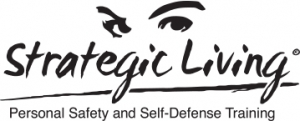I volunteered as a domestic violence advocate for several years. Over that time I staffed the crisis line, conducted orientation sessions for new clients, gave a couple of bystander intervention workshops, and assisted with support groups. Support groups were a core service of the agency, and incredibly valuable in helping DV survivors getting to and staying on their feet. It is super-important to know you’re not alone, there are resources, and you need not be isolated.
This particular group was facilitated by a staffer, we’ll call her Amy. She came across as kind and compassionate, someone you suspected you could really trust. She exuded that impression in several ways. This is one.
Those of you who have taken any of my classes know we spend time on body language. Specifically, on what’s called “open and expansive” body language. Also called the “power pose.” Feet shoulder width apart, eyes forward, arms and hands also out and not crossed or in your pockets. Basically, a posture that takes up more of your own space bubble. Body language that’s generally (at least in mainstream North American culture) interpreted as assertive and confident.
However, when in support group or otherwise speaking with clients, Amy’s body language was a bit different. She did  tend to cross her feet, and folded her arms, not exactly across her body but in front. Those aspects of her body language were what we self-defense teachers may have called “submissive,” if we restrict ourselves to that narrow continuum of submissive to assertive to aggressive. Which points more to shortcomings in our attraction to oppositions, contrast, and dichotomies. Amy came across as both attentive and relaxed, not aggressive, not assertive, not trying to define and stick her boundaries, and her body language — rather than submissive — was an invitation to connect.
tend to cross her feet, and folded her arms, not exactly across her body but in front. Those aspects of her body language were what we self-defense teachers may have called “submissive,” if we restrict ourselves to that narrow continuum of submissive to assertive to aggressive. Which points more to shortcomings in our attraction to oppositions, contrast, and dichotomies. Amy came across as both attentive and relaxed, not aggressive, not assertive, not trying to define and stick her boundaries, and her body language — rather than submissive — was an invitation to connect.
Consider Amy’s clients. They were people who experienced a controlling partner, and that control took the form of emotional abuse and often physical violence. The abuser’s body language would often have been domineering, at times aggressive but also the right assertive posture, combined with tension, could serve as a warning you better toe that line. Many DV survivors have become very attuned to other’s body language. And Amy’s was meant to address that.
I never did get around to asking her if her body language was deliberate, or if she had good instincts. Regardless, this is something anyone can practice. Like we do in our classes.
Speaking of which . . .
Check out our class schedule, and more to come.
Stay safe, live life.

 n
n